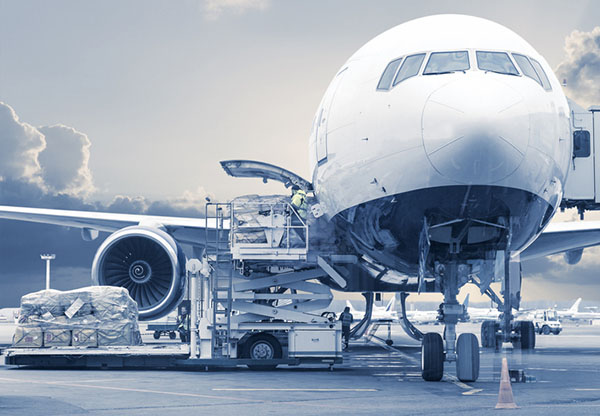Not phased by parting with FedEx, Amazon adds more aircraft

If the recent announcement made by FedEx in which it publicly stated it is no longer doing business with Amazon left any type of mark for Amazon, it looks like it did not phase the global e-commerce bellwether based on an announcement it made on Wednesday.
Why? The answer is that Amazon said it is adding 15 Boeing 737-800 converted aircraft to fleet through a partnership with GE Capital Aviation Services, whom Amazon already leases five Boeing 737-800s from, which was announced earlier this year. Amazon said the aircraft will fly out of 20 U.S.-based gateways in the Amazon Air network.
“These new aircraft create additional capacity for Amazon Air, building on the investment in our Prime Free One-Day program,” said Dave Clark, Senior Vice President of Worldwide Operations at Amazon. “By 2021, Amazon Air will have a portfolio of 70 aircraft flying in our dedicated air network.”
Much like all of its other transportation- and logistics-related endeavors, Amazon has been methodical in arranging things to exactly meet its needs and objectives.
Company officials made that clear in explaining the myriad facets of its Amazon Air operation that was rolled out in 2016, including:
- advanced algorithms and software used for capacity and route planning through which the Amazon Air operation can transport hundreds of thousands of packages per day;
- advanced algorithms and software used for capacity and route planning that enable the Amazon Air operation to transport hundreds of thousands of packages per day; and
- the opening of new air facilities in 2019 at Fort Worth Alliance Airport,Wilmington Air Park, and Chicago Rockford International Airport, with the main Air Hub at the Cincinnati/Northern Kentucky International Airport set to open in 2021
The working thesis for Amazon internally growing its air operations, going back to May 2016, has been to ensure air cargo capacity to support one and two-day delivery for customers.
And in looking at reporting in LM at the time of that May 2016 announcement, the air network was also part of the company’s intention to potentiallyup its logistics and supply chain operations presence to meet high levels of demand as e-commerce activity continues to increase.
Well, fast-forward three years later and it quickly becomes clear that has indeed happened, to say the least. Another interesting tidbit from that May 2016 announcement covered in LM is the following: “UPS and FedEx handle the bulk of Amazon’s deliveries, but Amazon has attempted to take more control over its supply chain after a mixture of bad weather and a last-minute surge in e-commerce orders delayed deliveries during the crucial holiday season two years ago.”
No matter how you look at it, it is crystal clear Amazon has had a well-thought out plan it has stuck to, one which has resulted in being in control of a majority of its assets both inside and outside of its many facilities.
And while it no longer has a partnership with FedEx anymore, with FedEx formally pulling the plug on Amazon’s business, Jerry Hempstead, president of parcel consultancy Hempstead Consulting, noted that is not what constitutes a big deal for Amazon.
“This is why Amazon is not concerned about being fired as a customer by FedEx,” he said. “This plan has been in the works for some time. “When you have your own lift, why do you buy lift from a third party like FedEx. This is just an addendum to the FedEx firing Amazon story.”
With Peak Season beginning in earnest in the coming weeks, Amazon looks to be as prepared as it ever has been. And that comes with the company continuing to write and re-write its transportation and logistics playbook in a way that meets the needs of Amazon, itself, as a company, and, of course, to maintain its core focus on delighting its customers.

Article Topics
Air Freight News & Resources
2024 Air Cargo Update: Cleared for take off Supply Chain Currents Part I: Is there a different way to move freight more effectively? Global 3PL market revenues fall in 2023, with future growth on the horizon, Armstrong report notes UPS fourth quarter earnings see more declines GRI Impact Analysis: Getting a Handle on Parcel Costs Averitt’s ‘State of the Supply Chain Survey’ presents an optimistic tone for 2024 2024 Transportation Rate Outlook: More of the same? More Air FreightLatest in Logistics
LM Podcast Series: Assessing the freight transportation and logistics markets with Tom Nightingale, AFS Logistics Investor expectations continue to influence supply chain decision-making The Next Big Steps in Supply Chain Digitalization Warehouse/DC Automation & Technology: Time to gain a competitive advantage The Ultimate WMS Checklist: Find the Perfect Fit Under-21 driver pilot program a bust with fleets as FMCSA seeks changes Diesel back over $4 a gallon; Mideast tensions, other worries cited More LogisticsAbout the Author
Subscribe to Logistics Management Magazine

Find out what the world's most innovative companies are doing to improve productivity in their plants and distribution centers.
Start your FREE subscription today.
April 2023 Logistics Management

Latest Resources














